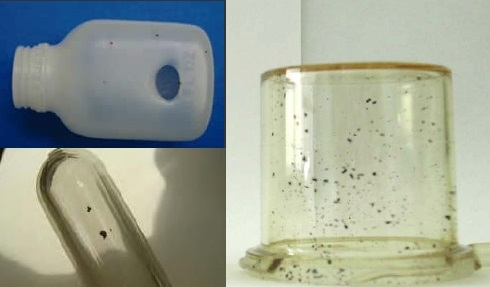Do you have a pile of plastic in your house with a mysterious green substance on it? Mold is a common household problem that can quickly take over and turn into an expensive mess. It can grow from spores that get trapped inside the airtight spaces in plastic products like shower curtains, pool noodles, and even toys. There are many ways to remove mold. Read this blog post to find out how!
Table of Contents
Why mold is dangerous:
molds produce mycotoxins
Mycotoxins are toxic chemicals produced by fungi. They can damage human cells and lead to cancer. Some people who work outdoors regularly develop respiratory issues as a result. Others suffer skin irritations and allergic reactions.
Here are some tips on How to remove mold from plastic:
Well depending on the resources available and the condition of contamination, you can choose which methods will work for you. Some of them are listed below:
Spray the moldy area with a mild bleach or vinegar solution
Mildly acidic solutions such as white vinegar will kill off most types of bacteria and fungi. They also help break down any organic material that may be present. You’ll need about 1/2 cup of water mixed with one tablespoon of white vinegar for every gallon of water. Spray the mixture onto the affected surface until all visible signs of mold disappear. Let dry completely before cleaning up.
Scrub away the mold with a cloth, sponge, or brush
If you don’t want to use chemicals, scrubbing away the mold should work just fine. Use a clean rag or sponge soaked in warm soapy water. Scrub gently but thoroughly. If there’s still some stubborn spots after washing, repeat the process again. Be careful not to scratch the finish when using abrasive cleaners.
Use steam cleaner
A steam mop works great at removing mold without damaging surfaces. Just fill the tank with hot tap water and let it run through the entire room. The heat kills off germs while leaving behind no residue. Make sure to keep the nozzle pointed downward toward the floor. This way, you won’t burn anything.
Rinse the area thoroughly and dry it off
After everything else has been tried, rinse the area well with clear running water. Dry it off by wiping with paper towels or rags. Don’t forget to wipe around light switches, outlets, door handles, etc. because they could harbor mold too.
Clean up spills immediately
Spills happen. When they do, make sure to clean them right away. Spilled liquids tend to attract more dirt than other substances. So if you spill something on carpeting, try to blot it up immediately. Then vacuum it up. For hard floors, sweep up the spilled liquid and then wash the area with soap and water. Afterward, apply a fresh coat of wax or polish to seal in moisture and prevent future stains.
Remember: Cleanliness is next to godliness.
Eliminate the mold source
The best way to eliminate mold growth is to stop exposing yourself to its sources. Avoid letting children play near pools or showers where mold grows naturally. And never leave wet laundry outside overnight. Instead, hang clothes indoors to dry.
keep windows closed during rainstorms
When it rains heavily, open windows to allow moist air to escape. But close them whenever possible to reduce humidity levels. Moisture encourages mold growth.
How To Prevent mold growing on plastic materials
Mold thrives when there’s excess moisture present. In fact, some types of mold require only one percent relative humidity for survival. As long as there’s enough oxygen available, mold will continue to thrive. However, most people don’t realize just how much moisture is required to support mold growth. A single drop of water contains about 1/10th of a gram of H2O. At 100 degrees Fahrenheit, that amount would be equivalent to 10 drops of water. The average adult sweats approximately 2 liters per hour. This translates to roughly 40 pounds of sweat every 24 hours. All told, we lose nearly half our body weight through perspiration alone each year.
So imagine having 50 square feet of floor space filled with dampness. Now multiply that number times 20 years – that’s 200 square feet of floor space saturated with moisture.
Wash your hands after dealing with Mold:
Wash your hands after handling any contaminated items to prevent spreading spores around other areas in your home
It doesn’t matter what type of product you’re dealing with; always remember to wash your hands afterward. Even though you might think you’re immune to getting sick from touching certain materials, you actually aren’t. Germs spread easily via touch. Wash your hands frequently throughout the day to stay healthy.
Keep pets out
Dogs and cats love to eat things that look appetizing. That includes food packaging, which means their droppings often contain traces of mold. Keep pet areas free of crumbs and litter boxes full of waste. Also, consider keeping trash cans covered to avoid attracting pests.
Wrap Up With A Skill
If any remaining traces of mold are visible, repeat these steps until all signs of mold are gone.
Once you’ve done all of those things, check back periodically to see whether the mold returns. If it does, follow the same procedure once again.
